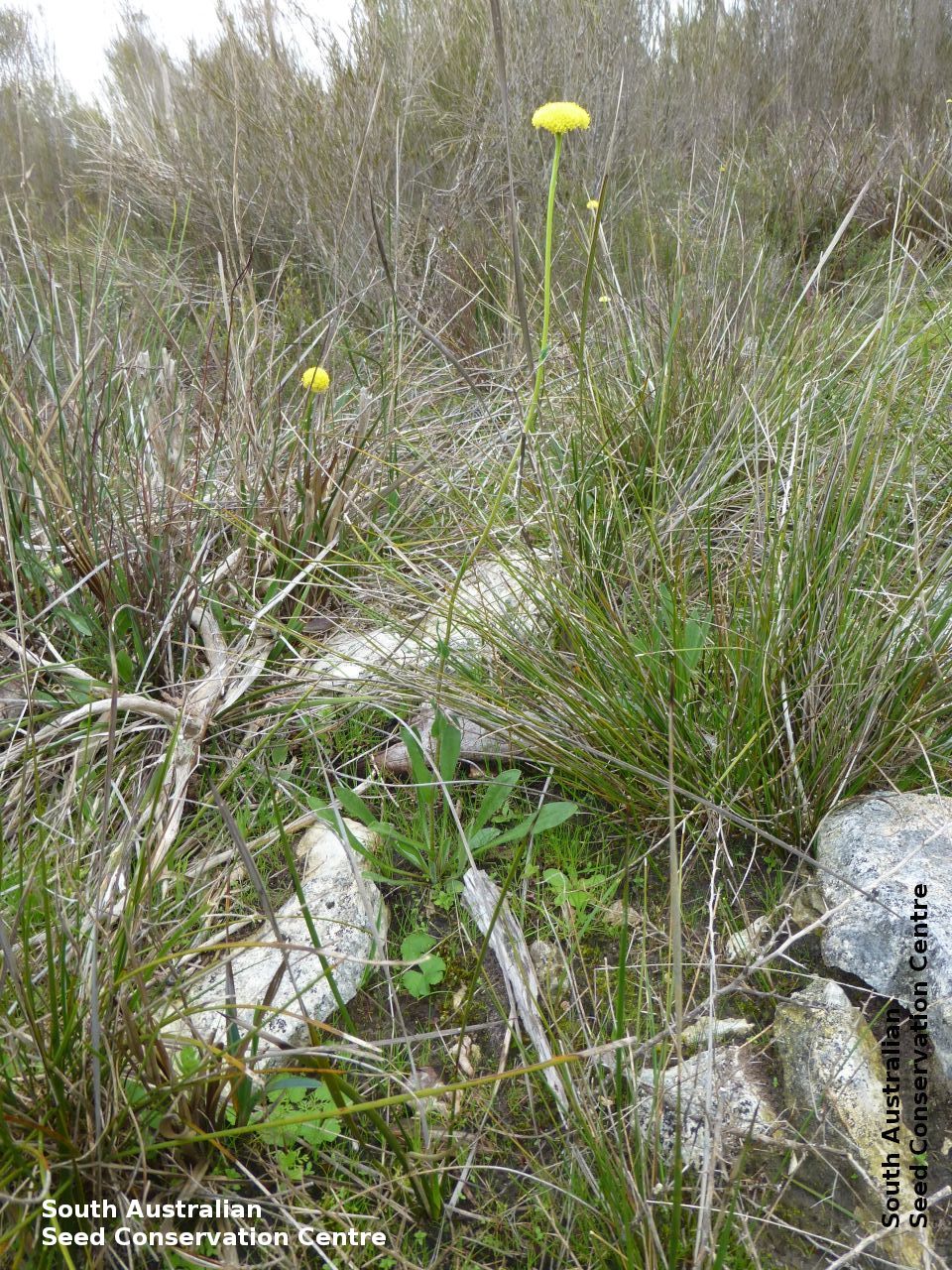
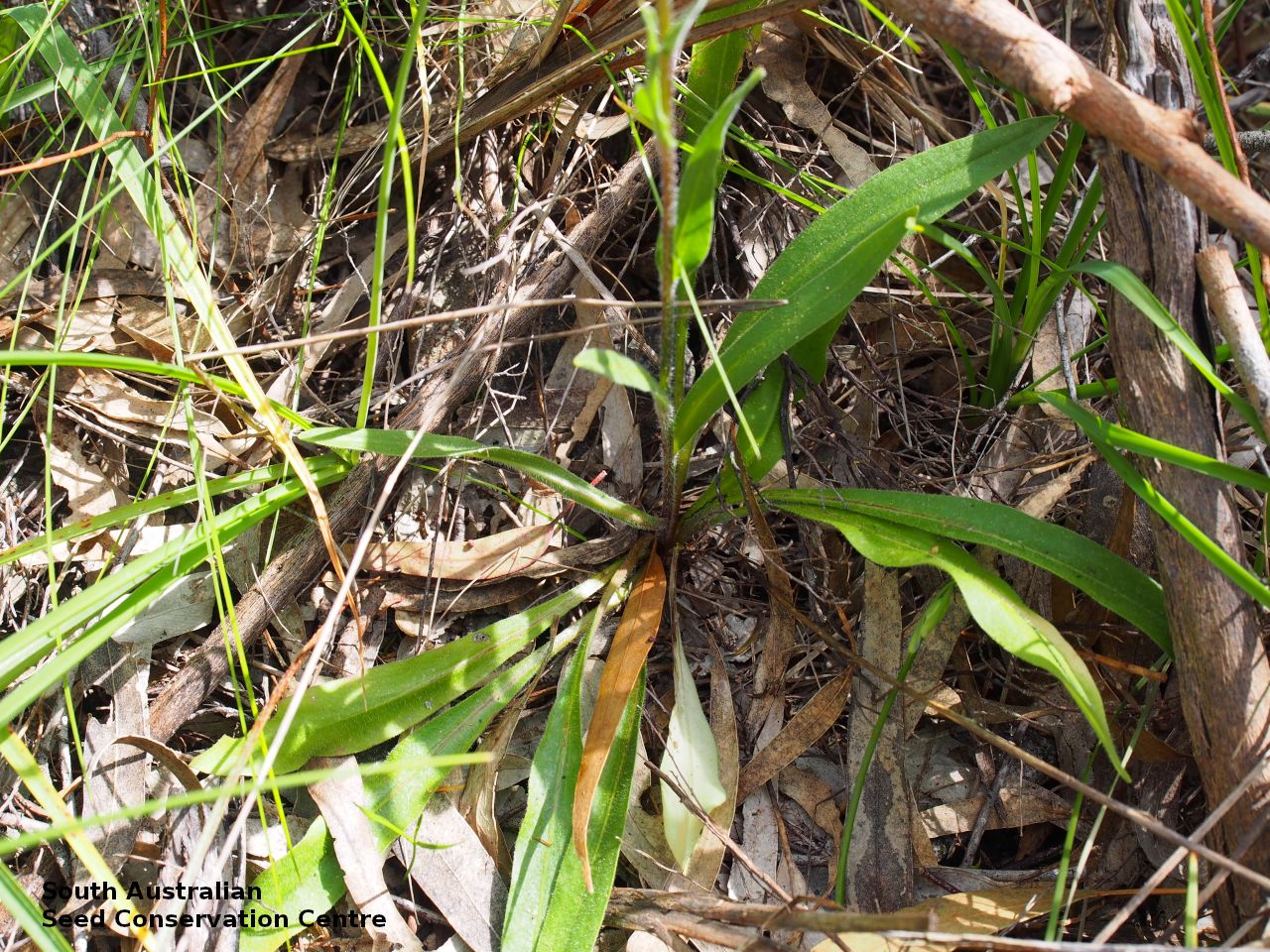
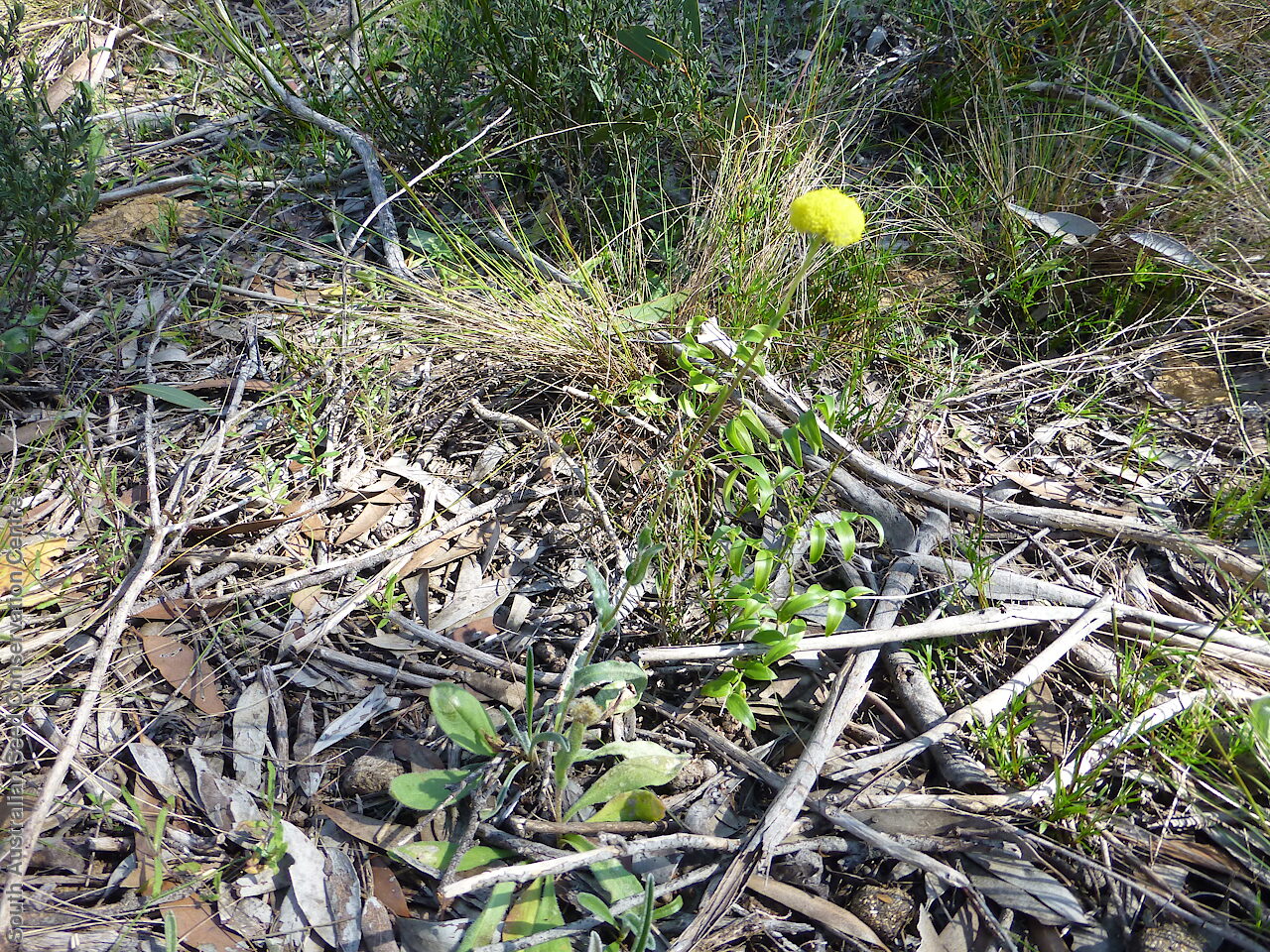
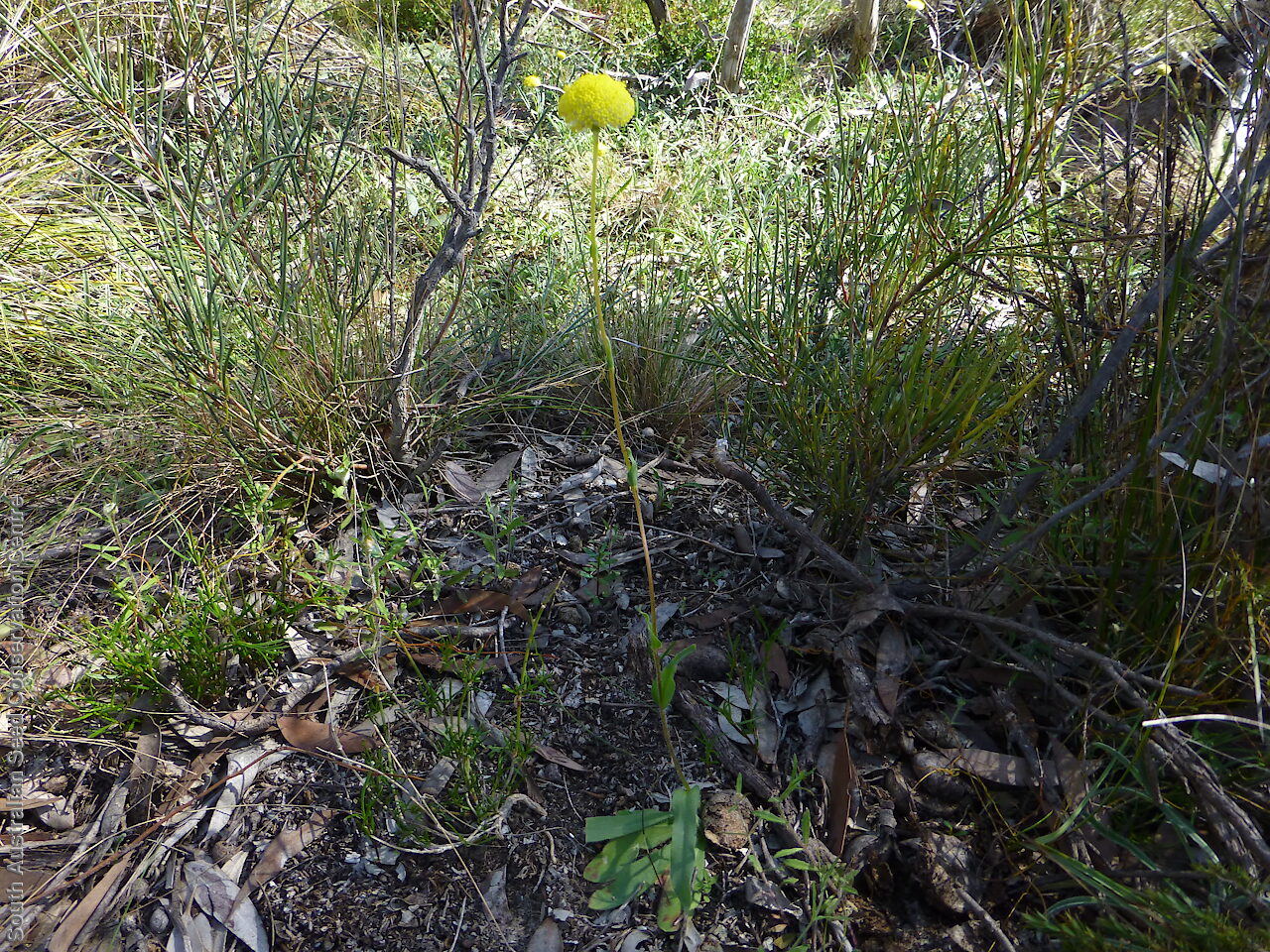
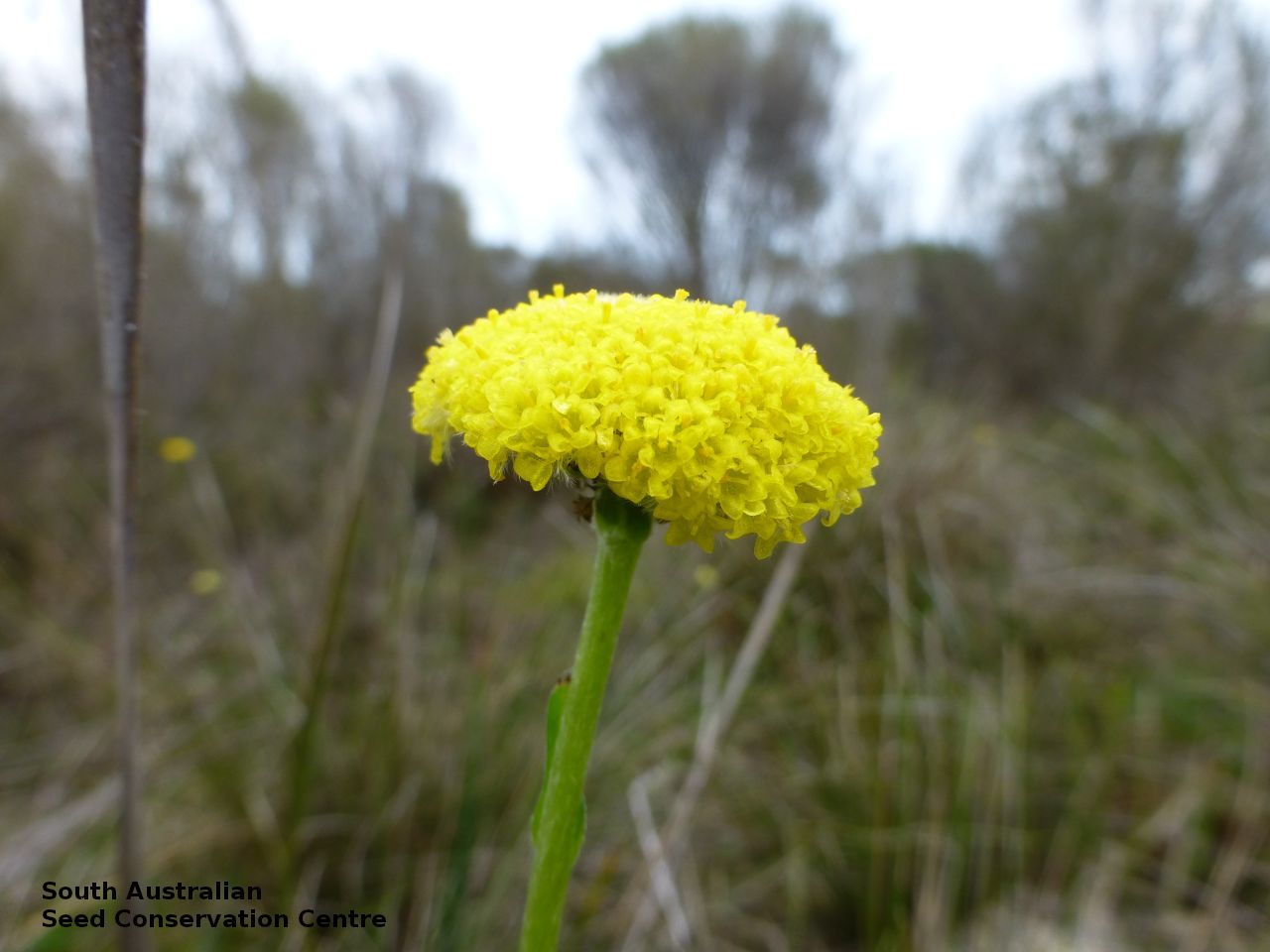
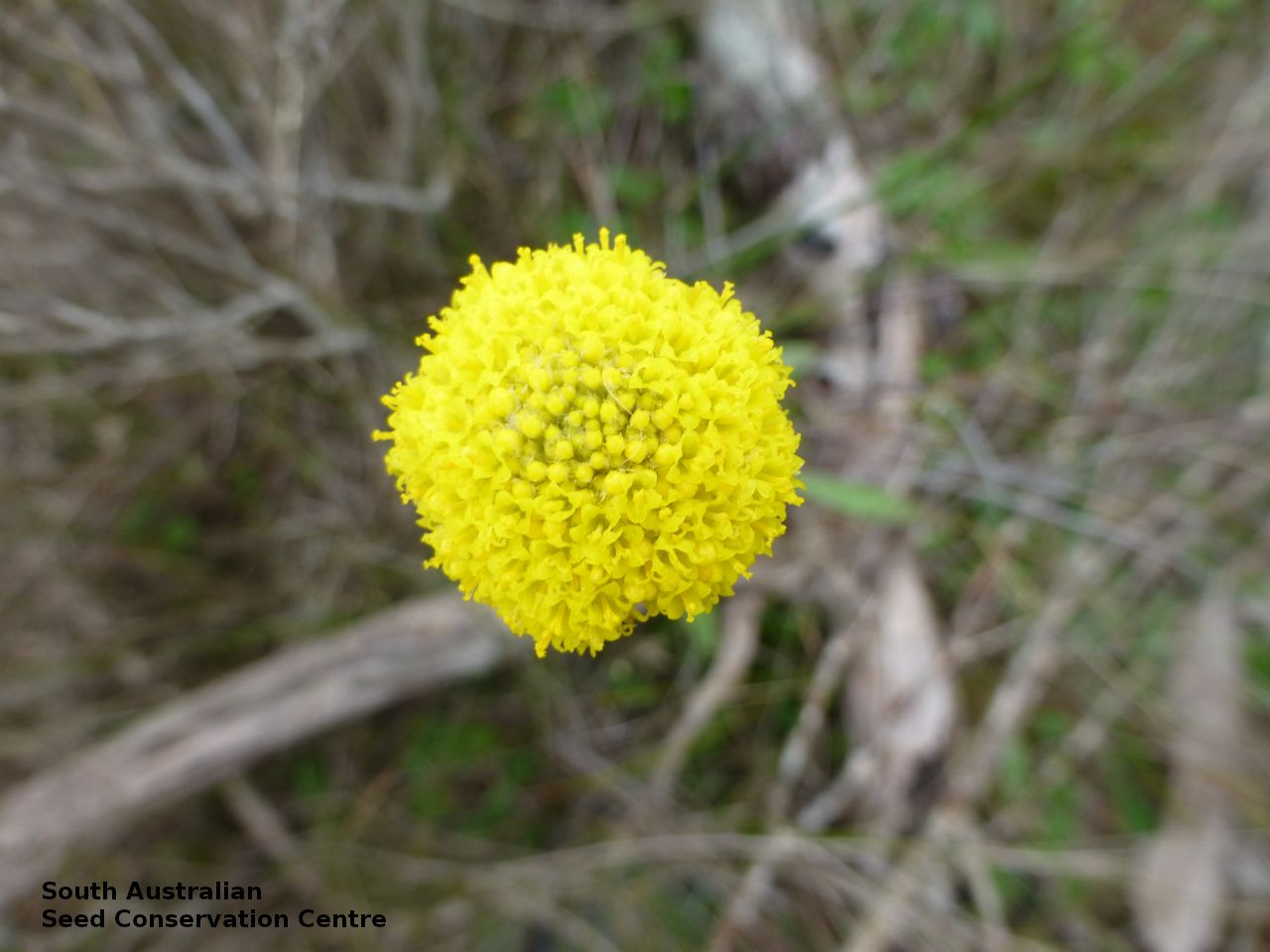
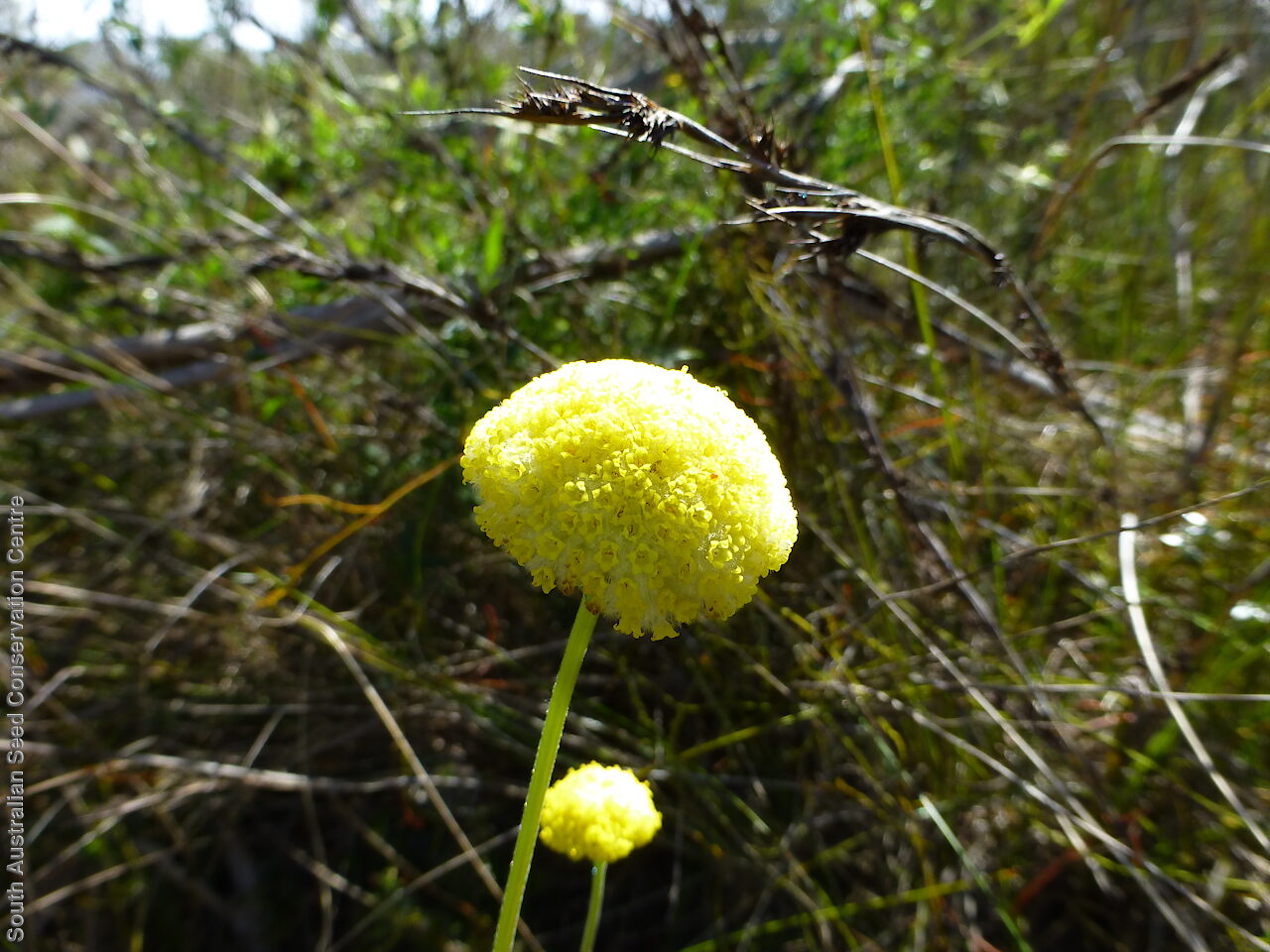
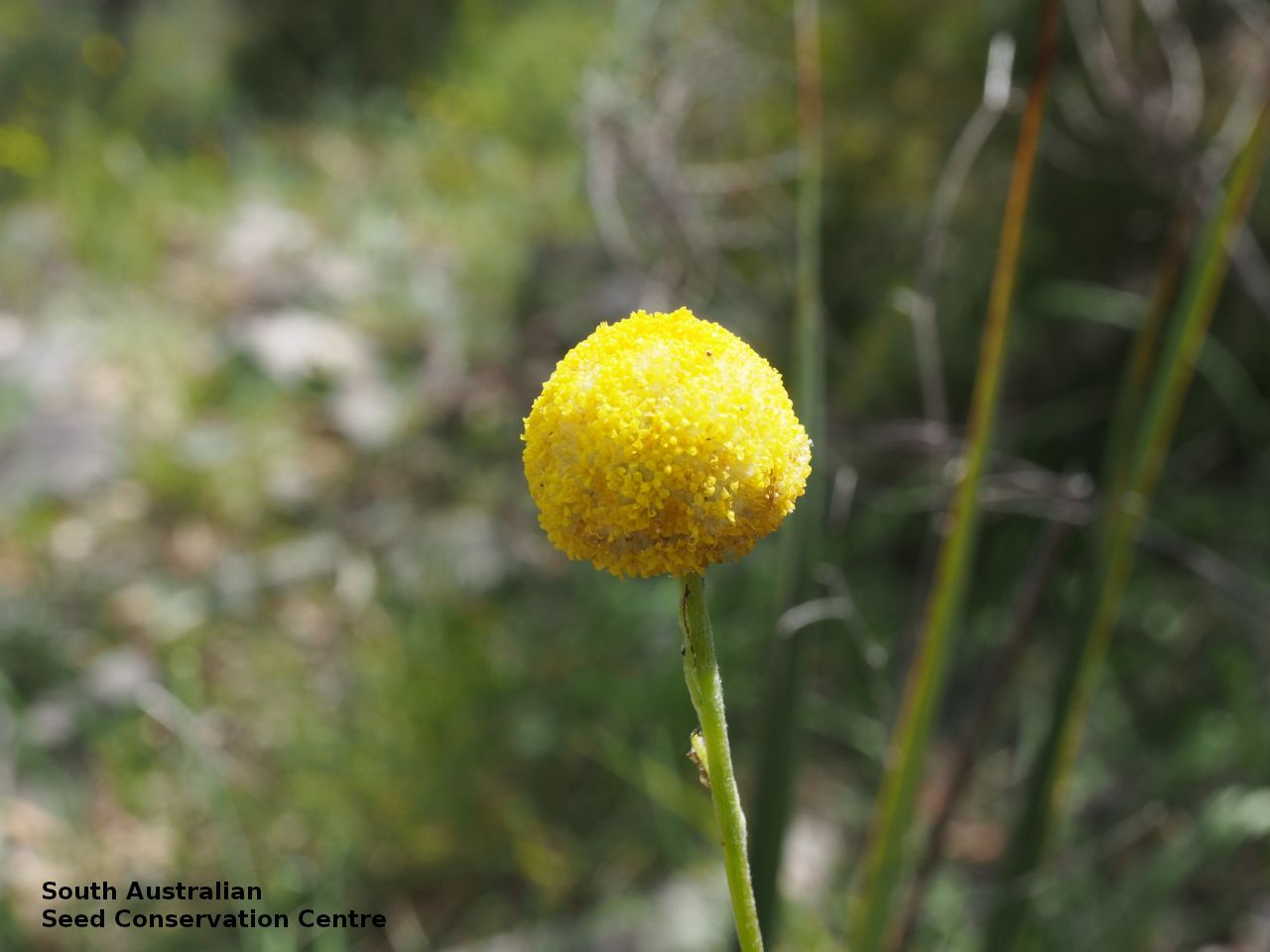
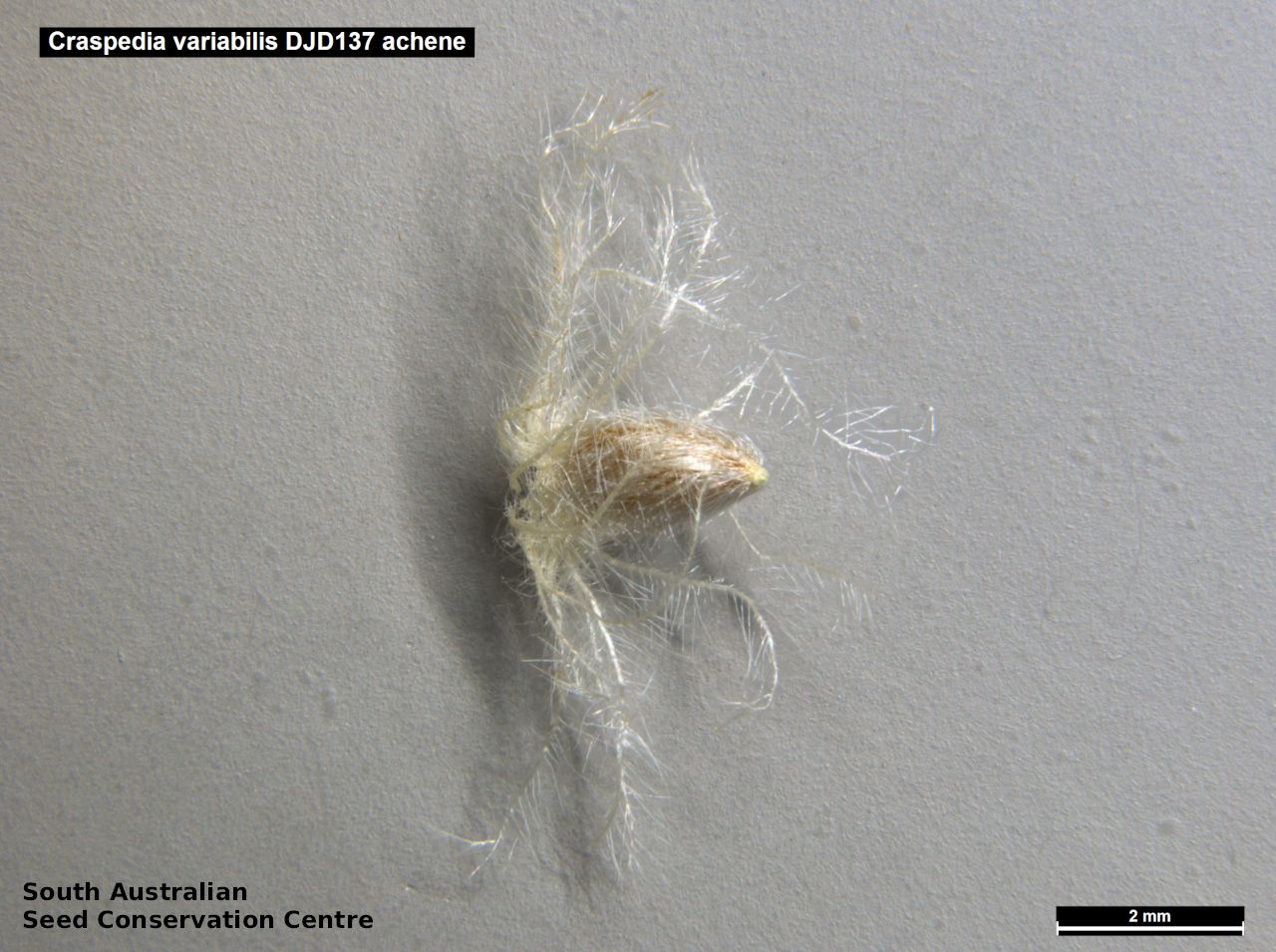
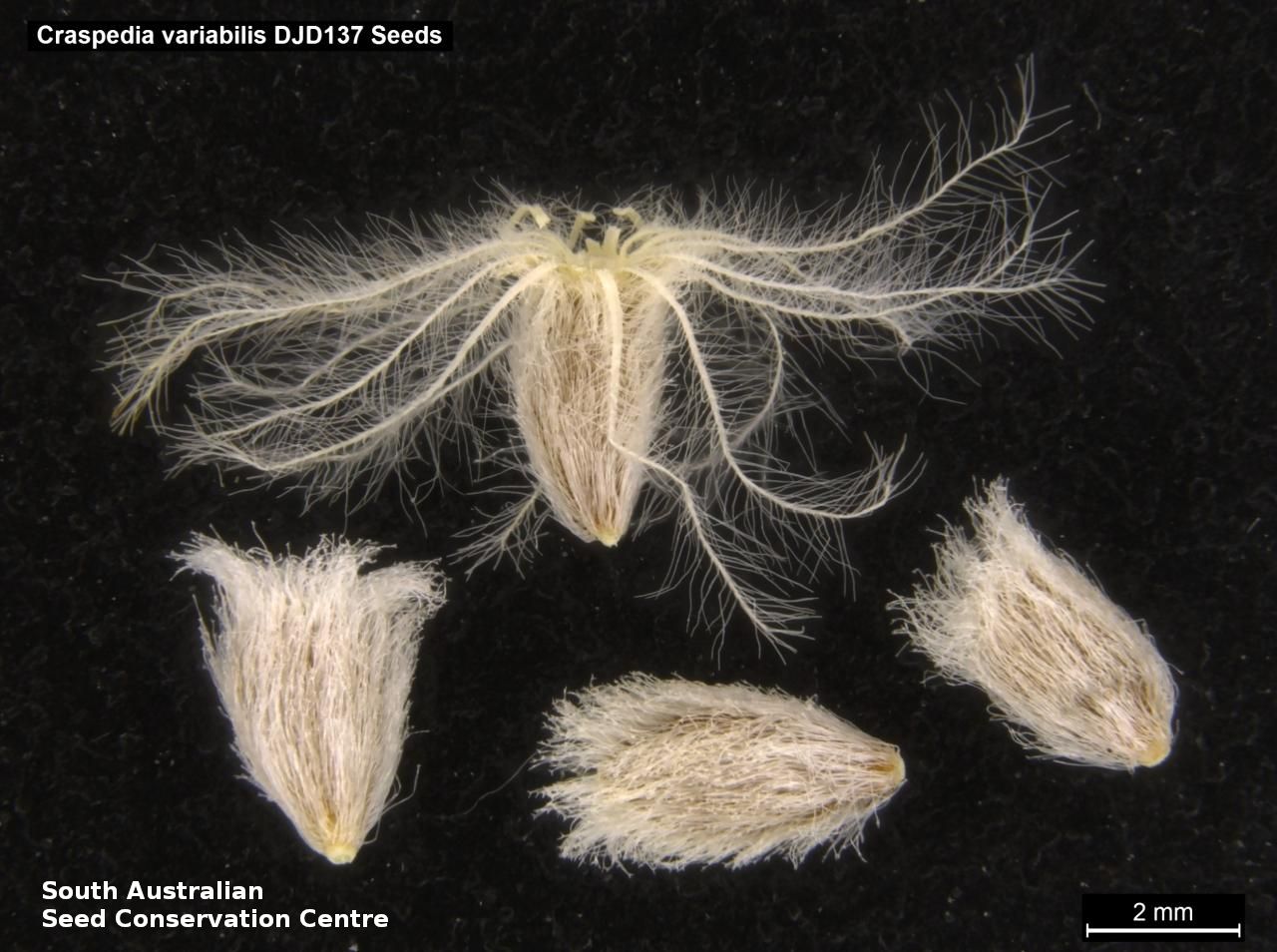

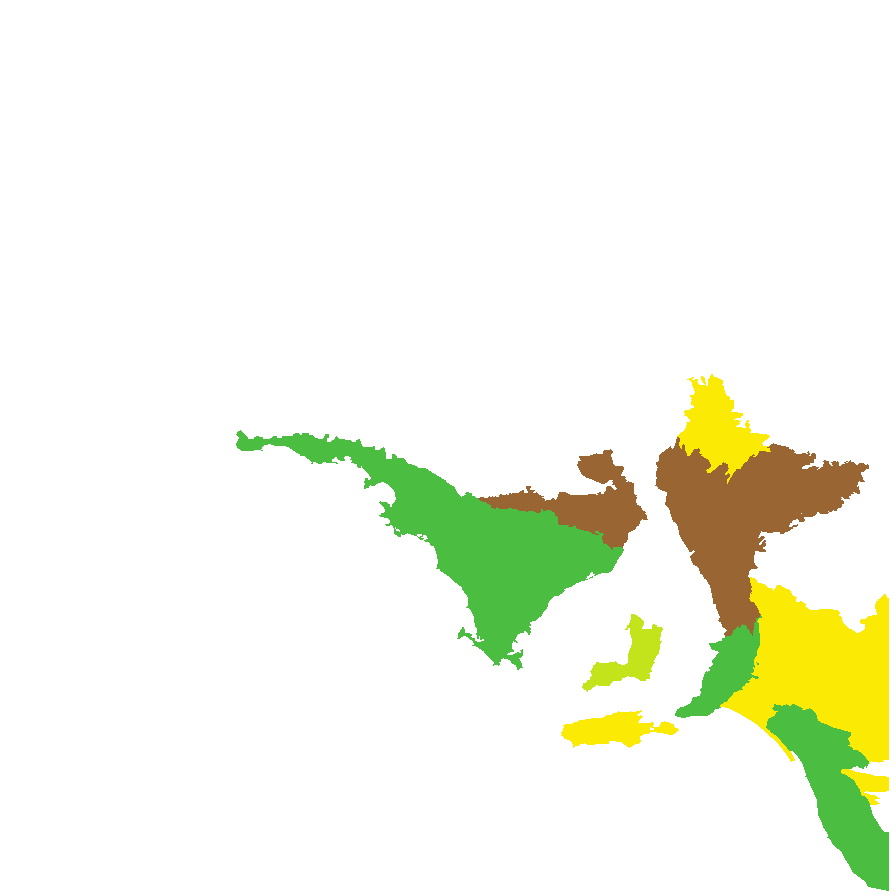
Botanical art
Prior names
Craspedia uniflora
Craspedia richea, nom.illeg., partly
Craspedia glauca, partly
Common names
Bachelor Buttons
Billy-buttons
Etymology
Craspedia from the Greek 'kraspedon' meaning a hem or border, referring to the woolly fringes on the leaves of the type species or the feathery pappus of some species. Variabilis from Latin meaning changeable or variable.
Distribution and status
Found in the southern part of South Australia, growing on sandy to clay-loam soils (sometimes very shallow). Also found in all States except the Northern Territory. Native. Common in South Australia. Common in the other States.
Herbarium regions: Lake Eyre, Flinders Ranges, Eastern, Eyre Peninsula, Northern Lofty, Murray, Yorke Peninsula, Southern Lofty, Kangaroo Island, South Eastern, Green Adelaide
AVH map: SA distribution map (external link)
Plant description
Erect hairy herb with thick roots and with 1 to several flowering scapes to 50 cm high. Leaves in a basal rosette and cauline, narrow-spatulate to 13 cm long, and 20 mm wide; broad-acute, pale to olive-green, with glandular hairs and multi-septate hairs and often with very sparse fine woolly hairs, (particularly near margins). Flower heads spherical with dense golden-yellow flowers. Flowering in spring and summer. Fruits are yellow-white, globular daisy-head. Seeds are brown ovoid seed to 4 mm long and 2 mm wide, covered in white hairs. Seed embryo type is spatulate fully developed.
Seed collection and propagation
Collect seeds between October and March. Collect heads that are drying off, fluffy and turning yellow-white with hard brown seeds. Pick off whole heads or pluck off mature seeds with your fingers. Place the heads in a tray and leave to dry for one to two weeks. Then rub the heads gently by hand to dislodge the seeds. Use a sieve to separate the unwanted material. Store the seeds with a desiccant such as dried silica beads or dry rice, in an air tight container in a cool and dry place. Seed viability is usually high. Seeds are non-dormant, viable seed should germinate readily.
| Location | No. of seeds (weight grams) | Number of plants | Date collected | Collection number Collection location | Date stored | % Viability | Storage temperature |
|---|---|---|---|---|---|---|---|
| BGA MSB | 14,600 (14.64 g) 14,600 (14.64 g) | 100+ | 12-Oct-2005 | DJD137 South Eastern | 14-Sep-2006 | 80% | -18°C |
Number of plants: This is the number of plants from which the seeds were collected.
Collection location: The Herbarium of South Australia's region name.
% Viability: Percentage of filled healthy seeds determined by a cut test or x-ray.